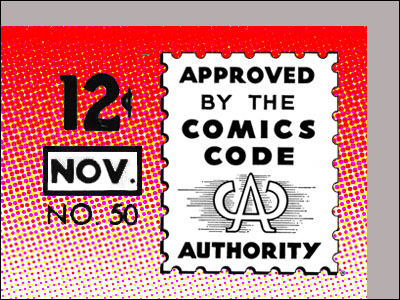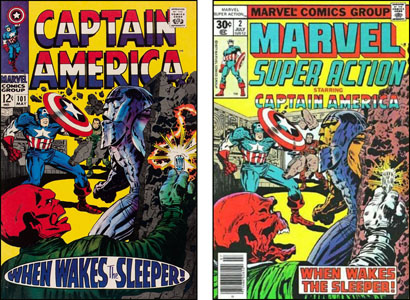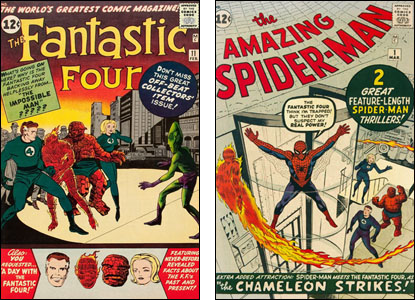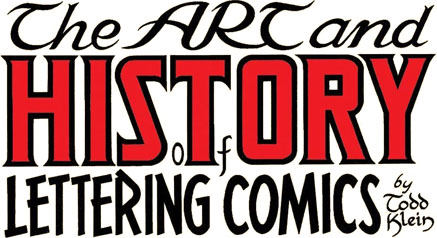The Comics Code Authority came into existence in 1954 because many comic book publishers feared that government regulation of their product was a' comin'. Most of the major publishers formed an organization called the Comics Magazine Association of America, drew up rules as to what could and could not appear in a Code-approved comic and hired someone to whom each comic had to be submitted for approval before publication.
It was technically a voluntary measure but a lot of smaller publishers quickly found out that it was tough to get distribution and/or advertising if they didn't join. One example: At about the time The Code was instituted, Joe Simon and Jack Kirby were attempting to start a new comic book publishing firm called Mainline. According to both men, their distributor, Leader News, told them that if they didn't comply with the C.M.A.A., their books would never get on newsstands.

They went along with it and Mainline's books still didn't get decent distribution, at least in part because Leader News had also distributed Bill Gaines' E.C. line of crime and horror comics like Tales From the Crypt. Those books were largely killed by The Code but both Joe and Jack felt that the major publishers still had it in for Gaines and his distributor. Several other small publishers also folded despite displaying Code approval. Both Joe and Jack felt that was one of the reasons the major publishers banded together: To drive out smaller publishers.
But there were at least two companies then publishing that thrived despite refusing to sign onto The Code. Those two were Gilberton (which put out Classics Illustrated and other somewhat educational comics) and Dell (which put out Disney and a lot of TV and movie-based comics). Both those firms felt that the content of their books protected them and that they should let the wholesomeness of their lines be used to help the companies that had, as one editor who'd worked for Dell back then put it, "damn near destroyed our entire industry."
Later, when Dell Comics split into two lines — Dell and Western Publishing's Gold Key Comics (explained here) — neither outfit subscribed to The Code. Several times in interviews, whoever was the spokesperson for The Code at the moment would be asked about those two holdouts and they'd say something like, "Those companies choose not to participate but they've assured us they unofficially follow our guidelines," whereupon someone from Dell and/or Western would fire off a letter to the C.M.A.A. which said something like, "That's a lie and if you say it again, we'll sue your sorry asses!"
The Comics Code seal of approval/compliance was designed by the great designer of logos for DC Comics, Ira Schnapp. It appeared on the other publishers' wares until Marvel dropped it and stopped submitting their books in 2001 and the other companies withdrew over the next decade. And that was the end of the Comics Code.
A reader of this site, C.K. Bloch, wrote to ask me a whole bunch of questions about the Comics Code and I answered most of them in the above paragraphs. But he also wanted to know…
Do you know of a lot of cases where good stories or art were ruined by the Comics Code demanding changes?
Nothing in my career but I started in 1970. At the inception of The Code, that seems to have happened a lot. The C.M.A.A. had to prove that its rules had teeth and so they demanded way more changes than they did later. Arnold Drake, who started writing for DC around 1956, said that the editors there sometimes put in dialogue or images that were specifically intended to give The Code something to cut. There was also this problem: At the moment The Code was instituted, every publisher had a lot of material in the pipeline that was written and maybe drawn when those rules did not exist. Much of that material had to be laundered to pass The Code.
At Marvel, the guy stuck with making a lot of the alterations on as-yet-unpublished material was the Production Artist, Sol Brodsky. He not only relettered and redrew a lot of stories then in the works, he was told make "before" and "after" stats that the C.M.A.A. could put in press releases to show how the new standards were cleaning up the business.
In the mid-seventies, I had a long talk with Sol about how The Code had affected the business and I came to the conclusion — this is my view but he agreed with it — that the main impact The Code had was that editors, writers and artists more-or-less censored themselves. And they may at times have erred too much on the side of timidity.
Comic books have always been a business where things are being sent to press at the last moment and there were penalty fees if your book got to the engraver or to press late. So people tended to also err on the side of caution. Most did not try things that they were afraid might cause the Code Administrators to demand changes. Changes took time that they often did not have.
I experienced something similar when I worked in animation for Hanna-Barbera or Ruby-Spears or other companies making Saturday morning cartoons. Most shows operated on tight deadlines. If production on a show had to be halted to make changes demanded by the Standards and Practices divisions at the networks, a few days might be lost…and those few days might cost the show a lot of money. It might even jeopardize an episode making its air date.
At least a half-dozen times when I worked for H-B, the network folks (especially at ABC then) would ask for changes and I would talk them out of them…and even if it was only took a day or two to get them to say, "Okay, leave it in," Bill Hanna would already have made the alterations in a rush to get the show off to Korea or Taiwan or wherever it was being animated.
In that conversation with Sol, he admitted to me that Stan Lee or someone else in the office would decide to rewrite something or have something redrawn…and perhaps it was a creative decision or perhaps they were afraid something might not get past The Code and the book was running late. But the change would be made and if anyone asked or the writer or artist objected, the excuse was "The Comics Code made us change it!"
Over the years, I asked several folks who edited comics in the sixties and seventies, the following question: "Did you ever make a change in story or art and when the writer or artist complained, you fibbed and said the Comics Code had demanded it?" Offhand, I recall asking that of Julius Schwartz, George Kashdan, Joe Kubert, Len Wein, Archie Goodwin and maybe one or two others. All of them said yes. And of course, I asked Stan Lee and of course, his answer was, "I don't remember but probably." You got that answer a lot when you asked Stan a question about almost anything. He once said it when I asked him if he'd gone to lunch yet.
I am not saying the Code did not at times insist on changes…and often stupid changes. I am saying that I think it got blamed for a lot of changes it did not demand, especially in later years. And I think its main damage was that its mere presence — the fact that someone was going to look over the work and look for things that were in questionable taste — inhibited a lot of writers and artists and editors.
Ever since that conversation with Sol, I've been skeptical when I hear, "Oh, the Comics Code made us change that" or the assumption by readers that when something was changed that it was the restrictive, puritanical Comics Code at work. Here's an example. At left below, you see the cover of Captain America #101 as it first appeared, drawn by Jack Kirby and inked by Syd Shores. At right, we see the cover of an issue that reprinted the same material years later. You will notice that the head of the villain, The Red Skull, is different…

Comic book scholars noticed the difference and the theory/assumption or whatever you wanted to call it, went like this: Jack forgot and drew the old, uglier version of the Red Skull from the forties. When the artwork was submitted to the Comics Code, they thought the villain looked too scary and demanded that it be redrawn…which it was, not by Kirby or Shores. Years later, when the material was reprinted, Marvel used a stat of the cover as it stood before submission to The Code and whoever was at The Code then saw the material differently and let it pass.
That is all entirely possible but I have an alternate theory. When Syd Shores was inking Kirby on Captain America, he often made changes in Jack's work which Stan didn't like. Mr. Shores had been told that any issue now, he would stop being just the inker on the comic and it would take over the penciling of the book so that Kirby could be rotated to another project. That transfer of power never happened but when it was the plan, Shores took some liberties with Jack's art from time to time. And more than a few times, Stan had the work retouched back closer to the way Jack did it.
I don't think we know which artist — Kirby or Shores — made the Red Skull look like he did in the forties when both men drew him. If I had to, I'd bet on Shores but I think this was retouched before the folks at the C.M.A.A. offices saw it. Stan Lee often (very often) would look at a cover that was being ready for publication and ask to have the character's face redone by a staff artist, usually John Romita Sr. If you can't spot a lot of touch-ups on Marvel covers of that era, you aren't paying attention. Romita redraws abound and when they aren't by him, they're by Marie Severin or Herb Trimpe or someone else. Some editors just love to tamper.
Later when the reprint was sent to press, a pre-retouch stat was used but Stan wasn't in charge of covers by then…and if he did see it, by then he didn't care. And the Comics Code never cared.
There was plenty wrong with the Comics Code and we can talk more about that at another time. I just think that arguably-necessary-at-one-time institution didn't make all the obvious changes that comic fans think. And again, a lot of changes were made (or work softened) because someone was afraid of what The Code would say…which is not the same thing as The Code demanding something be changed. That's what I think.







